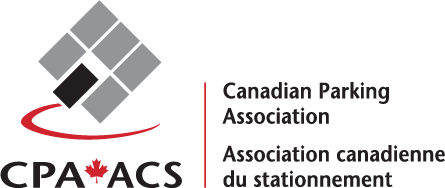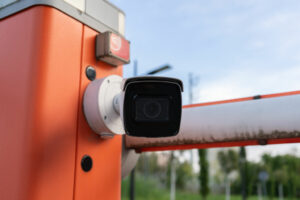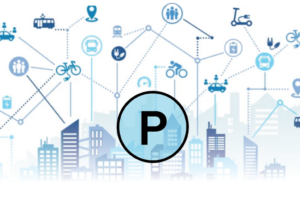By Bill Franklin
Our company, Tannery Creek Systems, has been making License Plate Recognition equipment since 2007. In the sixteen years growing our company across North America, one of the most common and interesting topics that our clients raise is license plate recognition (LPR). How does it work? Can I use it for permits? Do you sell this data? What is the rate of recognition?
This article was inspired by the LPR panel that I moderated at this year’s Canadian Parking Association conference and tradeshow. The set of questions raised by or to the audience is the springboard to this article. I have added additional questions that our clients have asked us. In this question-and-answer format, you may discover a deeper understanding of LPR.
What is LPR?
License Plate Recognition (LPR) is a specialized Optical Character Recognition (OCR) system. It requires a camera and computer to extract the characters and try to make sense of them. LPR, among other names, is also known as:
- Automatic Number Plate Recognition (ANPR)
- Automatic License Plate Recognition (ALPR)
- Automatic Vehicle Identification (AVI)
- Plate scanner
LPR was originally developed at Scotland Yard in the UK and began operation in 1978, so it has been around for a good many years.
How does it work?
Typically, a camera captures 20 frames per second (or more) and these frames are analyzed for the presence of a rectangular surface with digits, i.e., a license plate. The analysis can be in the camera that has a sophisticated microprocessor, a graphics processing unit (GPU) or processed in the Cloud which will employ essentially the same thing, i.e., a GPU. Two competing systems perform LPR: font-based recognition versus the newer artificial intelligence (AI) also called machine learning based systems.
From left to right: Hendrik Pot, CFO at WPS, Giovanni Santamaria, Managing Partner at Certina, Erik Stronk, CEO at WPS
WPS Parking Solutions, specialists in innovative cloud-based parking management solutions has been acquired by Munich-based family-run industrial holding company CERTINA GROUP. With over 25 years of experience in building and reshaping companies, CERTINA will further invest in WPS, its solutions, customers and employees to drive innovation and growth within the parking industry.
The sale of WPS Parking Solutions to CERTINA will result in the separation of the current WPS organization. WPS North, including WPS Belgium, WPS Parking Systems (NL), WPS Canada, WPS UK, WPS US, and WPS Holding, will now be part of CERTINA’s portfolio of companies. WPS North will continue to operate as an individual company under CERTINA.
WPS Brazil, as an independent company within the WPS family, will not be sold. The current shareholders, local management and Egeria, will continue WPS operations in Brazil and South America in its current form.
WPS and CERTINA are committed to ensuring continuity and growth in the parking management solutions industry. The acquisition is an exciting opportunity for WPS to enter the next phase of its development with a new owner who has extensive experience in building and reshaping companies.
Erik Stronk, CEO at WPS Parking Solutions: ‘’We look forward to a bright future that we will realize together with CERTINA. With their investments made according to the principles of sustainability, continuity and corporate responsibility, we find the ideal partner in CERTINA to help us navigate changing market conditions and further invest in our products, employees, and growth. I am confident that this acquisition will accelerate innovation and success for our business and customers.”
Giovanni Santamaria, Managing Partner at CERTINA: “We are excited to welcome WPS Parking Solutions to the CERTINA family of companies. With our extensive…
By Brian Wolff
Over the past decade, municipal parking has become extremely data centric. As municipal parking administrators have come to rely increasingly on technology to improve the parking experience, they’ve discovered that these same tools can provide valuable operational data that can be used to manage parkades more efficiently and effectively.
PARCS systems, parking guidance, LPR, and mobile payment apps are wonderful management tools that provide important utilization data. Need to know how full your lot or parkade is, and when it tends to be most full? These technologies can tell you, often in real-time on any device. Want to know what types of parkers are using your parkade, an automated permitting program tied to your PARCS system can tell you that.
It’s obvious why these types of data are so valuable. Benchmarking is an essential element of any parking management program. If you understand your parking trends you can make sensible decisions about how to manage your parking programs. It’s why so many parking owners and operators rely on their PARCS and guidance tools for data.
Ask the Customer
But if you are focused solely on utilization data, you are only getting half the story; and you may not be getting the most important half. As important as it is to know who is parking in your facility, and when, it’s even more important to know how their experience was. Did they have trouble getting in and out of the parkade or lot? Did their payment go smoothly? Did gates and ticket machines work as expected? These are essential issues if you want to earn repeat business from parkers.
The most obvious way to get this information is by surveying customers. Hearing about parkers’ experiences straight from their own mouths is the best way to see how…
By Chris Scheppmann
The urban transportation landscape is rapidly changing, with ride sharing services becoming ubiquitous and self-driving vehicles on the horizon. No longer do most travelers drive themselves to a parking facility near their ultimate destinations; today they are just as likely to be dropped off by an Uber or Lyft driver right at the curb in front of their destination.
This trend has had a significant impact on downtown traffic, cluttering the curb with unmanaged vehicle movement and creating an unsafe environment for drivers and pedestrians alike. And curbs will become even more cluttered when self-driving vehicles begin to populate our streets in significant numbers, dropping off their passengers and then taking off.
In fact, over the past two years we have already begun to experience these changes because of the Covid-19 pandemic. At the height of the initial wave of Covid, restaurants and stores introduced curbside pickup to serve their customers (and to survive). In many neighborhoods curbsides are now more like a free-for-all, with drivers pulling up wherever they like for however long they want. The proliferation of self-driving vehicles will just exacerbate this already serious issue.
A Technological Solution
The answer to these new curbside pressures can be found in Intelligent Camera Technology. Intelligent Camera Technology leverages the latest advancements in vison-based software technology to provide accurate and affordable curb management. The cameras monitor curbside activity in real time, analyzing what types of vehicles are using the curb and for how long, and transmitting that information to a cloud-based platform that determines whether each vehicle’s use of the curb is appropriate.
The heart of the curb management suite is specialized software that constantly receives data from curbside cameras and analyzes that data in real-time. The software manages a host of essential curb-related tasks, including TNC monitoring,…
By Geoffrey Garnier
What does the city of tomorrow look like?
The city of tomorrow, which calls itself “smart,” will implement connected solutions (thanks to sensors, artificial intelligence, Internet of Things, etc.) that will collect a set of usable and concrete data to make the best possible decisions.
The benefits for these cities are multiple: first, it allows them to improve the engagement of public authorities and citizens by providing solutions that involve them and offer them a better quality of life. But also, to solve their environmental problems with solutions that are ecologically oriented.
Cities are therefore more connected, efficient in their decision making and eco-responsible.
North American cities are particularly ahead of the curve on this smart city concept with the aim of improving their productivity as well as their connectivity. Many of them have joined the Cities for Climate Protection™ campaign organized by the UN, which commits them to implementing eco-responsible solutions to promote the climate transition. Of the 650 participating municipalities, nearly half are North American: 159 are American and 133 are Canadian.
Some sobering parking figures…
95%, 17h, 900,000 tons… But what do these numbers correspond to? These figures are all related to parking and are the results of different studies around the world:
- 95%? The time that a private vehicle remains in a parking space. (International Parking Institute, Why parking matters, 2015)
- 17h? The average time a typical user spends looking for a parking space over the course of a year. And that same average is 107 hours in New York. (INRIX, The Impact of Parking Pain in the US, UK, and Germany, 2017)
- 900,000 tons? Greenhouse gas emissions that can be avoided through smart parking solutions. (Köln auf dem Weg zur Smart City, 2017)
These figures can be thought-provoking.
Indeed, parking lots are very often neglected and little…
Bill Smith
When is a parking solution not about solving a parking problem? It may surprise you to find out that parking garages can also provide solutions to non-parking challenges facing building owners.
Cell phone coverage poses unique challenges in urban high rise residential and commercial buildings. It can be difficult to provide consistent service throughout high-rise buildings, particularly in underground parking areas. The deeper the underground parkade—the tougher it is to provide consistent cell service.
And the problem is only getting worse. The latest cellular standard, “5G”, operates at very high frequencies and doesn’t penetrate buildings as easily as previous generations of Cellular did. While 5G may be great if you’re sitting in your car downtown, you may not be so lucky in areas with less direct sightlines.
Traditionally, developers and building owners have had to install distributed antenna systems ‘DAS’ to provide consistent cell service in their buildings. A distributed antenna system is a network of separated antenna nodes connected to a common source to provide wireless service throughout a structure or geographic area. DAS technology is effective but very expensive—a system can cost hundreds of thousands of dollars to install in a single building. And with cellular technology changing so rapidly, there’s no guarantee that these
DAS systems will continue to work with each new generation of cellular technology. That’s a lot of financial risk for a building owner to take on. The challenge is particularly acute in underground parking facilities, where 5G is particularly unreliable.
A Parking Solution
That was the challenge facing Goddard Investment Group in Dallas. Fountain Place, an office building owned by Goddard Investment, was ready for a cell upgrade that would extend reliable cell service into the building’s underground parkade. But the prospect of spending hundreds of thousands of dollars on technology that may…
By Ravali Kosaraju, PE, PTOE
In some corners of the parking industry “mobility” is considered a dirty word. For some professionals who have devoted their careers to finding new ways for people to park conveniently and safely, the current emphasis in mobility is off-putting.
In fact, though, parking and mobility are intrinsically connected. Mobility isn’t meant to replace parking; it’s meant to collaborate with it. In fact, as counterintuitive as it may seem, parking is an essential element of mobility.
To understand this, it’s first necessary to take a step back and look at what mobility really is. Mobility is the essential element of urban life. It’s about access. Access to the things people need to live a healthy and rewarding life. Access to friends and relatives, healthcare and other essential services, entertainment, shopping options, work, and recreation opportunities. Transportation is an element of mobility, but it’s not the totality of mobility. Rather, mobility is about having high quality transportation options.
What makes mobility options “high quality”? First is choice. Do residents and visitors have multiple transportation options? Are there opportunities to use their personal vehicles, access ride-share servicers, utilize public transit, and take advantage of micromobility? Is the community pedestrian friendly? Having a single transportation option isn’t conducive to mobility.
Time is also a key element. If it takes too long to go to and from destinations in a community, because of traffic or because there are too many stops on a bus line or subway line, you don’t have mobility. No one wants to spend hours to get to a grocery store and back, or from work and back.
Finally, safety is a key element of mobility. If it isn’t safe to walk, drive, take public transit, or bike you don’t have mobility.
So, transportation doesn’t equal mobility. You must offer…
Collaborative solution improves commuting, parking experiences
MONTRÉAL, August 3, 2022— Genetec Inc. (“Genetec”), a leading technology provider of unified security, public safety, operations, and business intelligence solutions, has teamed with commute management solutions provider RideAmigos to help organizations deliver a simplified and enhanced experience to commuters returning to offices post pandemic. The solution pairs RideAmigos Commute Hub with Genetec AutoVuTM Free-Flow and Genetec Curb SenseTM .
RideAmigos Commute Hub helps employers deliver a seamless experience no matter how their employees choose to get to the office. It enables commuters to identify their best transportation options and reserve a guaranteed parking space based on their needs, such as accessible parking, eliminating the need to circle lots in search of a space, and alleviating some of the stress of getting to work.
Space availability is guaranteed via automatic license plate recognition (ALPR) cameras. The pairing of RideAmigos’ Commute Hub with Genetec AutoVu Free-Flow and Genetec Curb Sense gives parking officials full insight into parking demand and facility status, so they can ensure parking conditions are optimal. The solution also enables employees to choose from many transportation options such as mass transit, shuttles, carpooling, and active choices like biking to work, so they select the commute that is the most beneficial and enjoyable on any given day.
“Leaders at large organizations realize that commuting options are a critical part of the overall employee experience, particularly as people transition back to offices after being fully remote,” said Genetec Product Line Manager, AutoVu, Michael Bradner. “Streamlining the commuter experience can help boost employee satisfaction and productivity. Our goal with this joint solution is to help organizations optimize accessibility and use of parking spaces and provide or subsidize alternative transportation services to reduce the burden on employees.”
“Employers are more conscious than ever…










